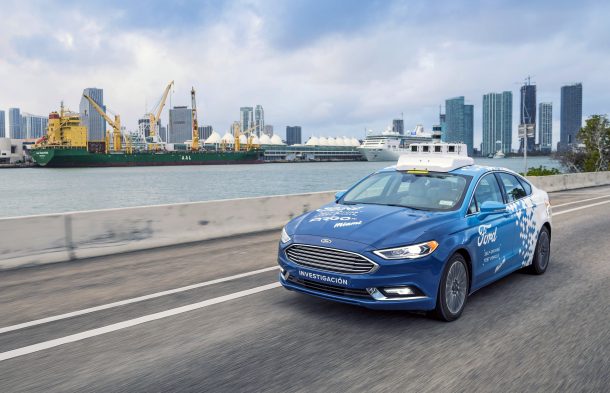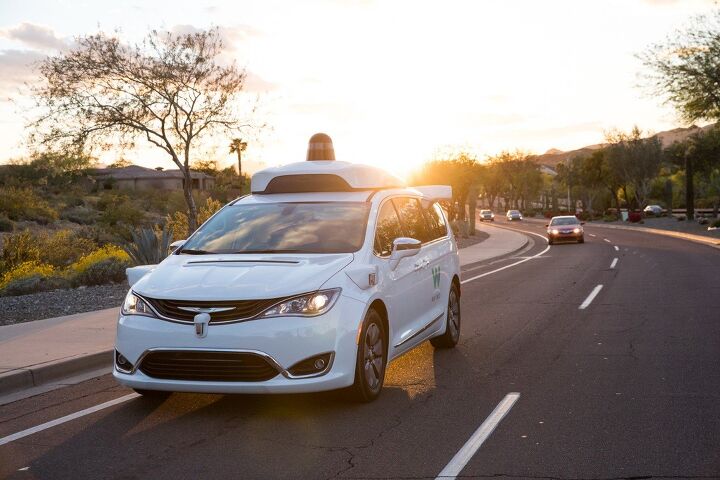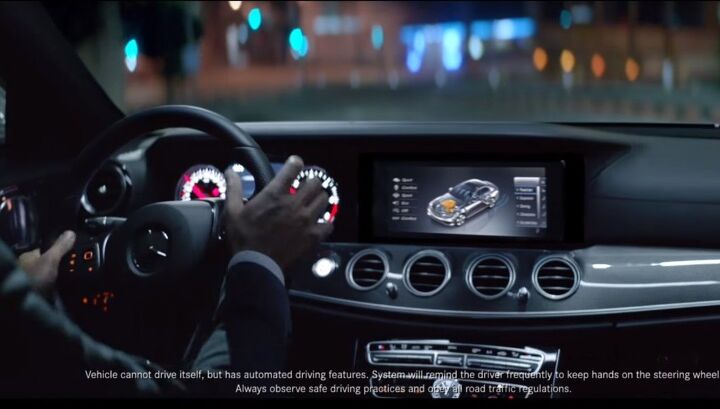#Self-drivingVehicles
Toyota Subsidiary Woven Acquires Lyft Autonomous Division
Toyota’s Woven Planet Holdings has acquired Level 5, Lyft’s self-driving unit. Woven Planet’s deal brings scientists, software engineers, and researchers together as one.
Volkswagen - and With It, Ford - Secures Self-driving Deal
U.S. self-driving startup Argo AI has completed a deal with Volkswagen AG on self-driving vehicle technology, fulfilling VW’s wishes for a secure and affordable source of gee-whiz gadgetry for future mobility solutions.
The deal, valued at $2.6 billion, will see VW fork over a cool billion while folding its Autonomous Intelligent Driving team into Argo AI’s operations. The automaker’s alliance partner, Ford, pledged $1 billion (over five years) to the startup in 2017, before last year’s tie-up with the German automaker.
Waymo Refocuses on Semis, Heads Back to Phoenix for Testing
Alphabet’s Waymo probably operates the most successful autonomous fleet in North America right now. While we can debate its technical prowess versus its rivals forever, it’s still one of the only companies offering a commercial taxi service using autonomous vehicles in North America. It also has an enviable safety record.
The company has also worked on adapting the technology for Class 8 trucks, testing such units previously in California, Atlanta, and Arizona. Recently, the company tweeted that self-driving semis would soon return for more testing in Phoenix — where it runs its Pacifica-based early rider program — as the company places a renewed emphasis on their development.
Waymo Picks Detroit Plant for Self-driving Vehicle Conversions
It’s a long way from the company’s fledgling, Phoenix-area autonomous ride-hailing service, but Detroit has enough available space and local talent for Waymo to sign a lease.
On Tuesday, the self-driving tech company announced a deal to mate Chrysler Pacificas and Jaguar I-Paces with autonomous hardware in an abandoned assembly plant sitting in the heart of the domestic auto industry.
Trump's No Fan of Autonomous Vehicles, Like Most Other People
Donald Trump apparently belongs to the 71 percent of Americans who remain averse to the thought of riding in self-driving cars. It’s a position that appears to be incongruous with the National Highway Traffic Safety Administration’s deregulation strategy. But there’s always a little room for someone’s personal preference to exist in tandem with public policy. At least, there used to be.
Considering the president’s involvement in American industrial matters routinely make him the central focus of auto-related topics, we’ll keep this one relatively brief. But the accompanying details of this story are too interesting to simply ignore.
ZF's New Camera System Focuses on an Oft-ignored Danger: the Driver
The rollout of semi-autonomous driver assist systems designed to turn long highway slogs into stress-free, breezy jaunts isn’t in any way perfected, but OEMs and suppliers are working on it. Depending on who builds what, lane-holding can be dodgy, automatic braking can be capricious, forward-facing cameras and radar can misidentify or ignore objects, and drivers can easily be put on too long a leash, encouraging misuse.
It’s the latter issue that automotive supplier ZF wants to solve with its new interior camera system.
How Safe Is Level 2 Autonomy? As Safe as the Automaker Makes It
No longer content with just crashing vehicles into walls or poles, the Insurance Institute for Highway Safety has turned its attention to the ever-expanding buffet of new technologies found in today’s automobiles. Driver assistance features ease the driver’s workload and make for comfortable highway cruising, but all systems aren’t made equal.
For its test of “Level 2” autonomous features — meaning, specifically, adaptive cruise control (ACC) and active lane-holding — IIHS selected five premium four-doors. The test group consisted of a 2017 BMW 5 Series with Driving Assistant Plus, a 2017 Mercedes-Benz E-Class with Drive Pilot, a 2018 Tesla Model 3 and 2016 Model S equipped with Autopilot, and a 2018 Volvo S90 with Pilot Assist. Given that each model garnered a “superior” IIHS score for automatic emergency braking, they seemed like choice candidates for a comparison test.
The results, as you’d probably expect, were a mixed bag. We’re not at the technological finish line yet; not by a long shot.
Uber Killing Off Autonomous Trucking Division
Uber is shutting down its self-driving trucks unit due to a lack of progress and the controversy surrounding its multi-million dollar acquisition of Otto in 2016. The firm was purchased with the intent of developing self-driving cargo haulers, potentially saving the trucking company a fortune by outsourcing driving jobs to robots. But it was slow to reach that goal and ran head-on with a serious distraction almost immediately.
Initially, things looked promising. Otto was famous for engineering a truck that hauled a trailer full of beer across 120 miles of Colorado highway without human intervention. But it found a different sort of fame after its founder, Anthony Levandowski, took over as head of Uber’s self-driving car research and Waymo faulted him with handing over trade secrets.
As a former engineer for Google’s autonomous vehicle project (which would later evolve into Waymo), Levandowski was privy to sensitive information he was later accused of selling as part of the Otto buyout.
In Wake of Crashes, Public Confidence in Self-driving Cars Pulls a U-Turn
Following a Wild West-like expansion in autonomous vehicle testing, coupled with years of rosy predictions from automakers and Silicon Valley types, the public seemed ready to embrace self-driving cars with open arms.
Opinion polls showed significant distrust in the technology, but least among young adults, the idea of self-driving cars remained a popular one. That’s changed, apparently.
Old Man Lutz Gives Dealerships 20 Years to Live, Doubles Down on Driving Dystopia
Longtime auto executive Bob Lutz has always been an incredibly outspoken individual. His years of hard work have given him an insight into the industry that few possess, and he’s only become more willing to share that information as he ages. Like the industrious caterpillar, his ceaseless labor has allowed him to metamorphose into what is arguably his perfect form near the end of his lifecycle — a candid automotive butterfly.
We love hearing anything has to say, as his insight borders on the surreal, but with more than enough truth to come to pass. Last year, he divined a future where the car as we know it is destroyed by governmental regulation and advanced technologies. The dystopian plot seemed impossible upon a cursory glance, but the deeper you drive, the more plausible it begins to seem.
Lutz refocused this week at the SAE International WCX World Congress Experience in Detroit, saying the traditional dealer model will be among the first things to go in the brave new world of mobility. He called car dealerships an “endangered species,” suggesting to the crowd that it had “another 20 to 25 years before it’s all over.”
Is Uber Putting It in Reverse on Autonomous Vehicles?
Is ride-hailing company Uber backing away from self-driving cars now that one of their test vehicles was involved in a fatality?
Following the death of a pedestrian hit by one of Uber’s experimental autonomous vehicles in Tempe, Arizona, the ride sharing company suspended the testing Uber was doing with AVs on public roads in Pennsylvania, Arizona, and California in the United States and Ontario in Canada. Now comes word that Uber has informed California’s Department of Motor Vehicles that it will not be renewing its license to test autonomous vehicles on that state’s public roads. That license expires at the end of this month.
Self-driving Company Waymo to Buy Thousands of High-end, Sporty Jaguar EVs for Taxi Service
Let’s hope future robo-taxi passengers appreciate a sport-tuned suspension and crisp driving dynamics, because there’s a slim chance they’ll notice it when shuttling around in a driverless Jaguar.
On Tuesday, Waymo, autonomous car unit of Google, announced its intent to purchase up to 20,000 Jaguar I-Pace electric crossovers for its future fleet of AV EVs. Fitted with an array of self-driving hardware and software, Waymo says the cars will hit the road in 2020. Testing begins this year, which has us wondering what kind of wait a regular I-Pace customer faces.
Old Man Lutz Outlines the 'End of the Automobile Era'
Although semi-retired from the automotive industry, Bob Lutz still has his fingers in a lot of pies and continues to provide insight into the vehicular world as he sees it through veteran eyes. I never miss an opportunity to read what he’s got to say about the industry because he provides unusually frank insight paired with borderline ludicrous sensationalism that’s too juicy to ignore.
That doesn’t mean he’s wrong, especially since one of his more recent claims about the financial inviability of Tesla Motors has started to seem particularly astute. But a lot of his premonitions haven’t had the time necessary to come to pass, leaving us to speculate if he’s an automotive sage or just an old crank. He routinely weighs in on the industry to offer entertaining doomsday scenarios — and his newest one is the bleakest yet.
Waymo Drops Comprehensive Self-Driving Safety Assessment, Tries to Educate Public
Autonomous cars have the unique capability to captivate the public’s imagination while simultaneously making them feel uneasy after considering things on a more practical level. A handful of self-driving related accidents, inconsistent development timetables, and a hands-off regulation strategy haven’t helped. But there is a sense that if the populace had a better handle on what went into making the technology work safely, some of their fears would be put to rest.
This week, Waymo — the relatively quiet autonomous vehicle arm of Alphabet Inc. — made an attempt to do just that. While also making a case for itself and the need for self-driving cars, the company released a 42-page outline of how its autonomous systems function. Written without a lot of technical jargon, the reading remains comprehensive and is one of the best attempts we’ve seen from a company to educate the public — rather than dazzle them with lofty promises.
Talking With Lights: Ford Disguises Driver As a Seat to Scrutinize a Confused Public
Ford Motor Company has been funding research at Virginia Tech that takes an interesting approach to autonomous vehicle development. In early August, a reporter for an NBC affiliate in Washington D.C. filmed a video of a Ford Transit being driven by a man dressed up as the front seat of a car. Initially, it seemed like a strange campus prank. But it was later discovered that Virginia Tech’s Transportation Institute was doing research on how people would respond to a self-driving vehicle.
Apparently, they’ll approach it with a camera — even if it’s in the middle of the street or flying down the highway.
Ford later released a series of hysterical images featuring the man climbing into the false seat costume, announcing that it was researching reactions to the light bar stretched across van’s windshield. The lights are intended to replace cues like hand waves or head nods between drivers and pedestrians.
Presently, drivers have the ability to motion their hand at pedestrians, indication that it’s safe for them to walk. This author takes things a step further by mouthing easy to understand phrases like, “Fear not, I have decided to spare your life and will not crush you beneath my mighty wheels if you pass” as I ambulate my fingers in a walking motion and nod my head in a slow, deliberate fashion. It usually gets the point across, but it’s nice to know Ford can save me the trouble with a bunch of blinking lights.






























Recent Comments